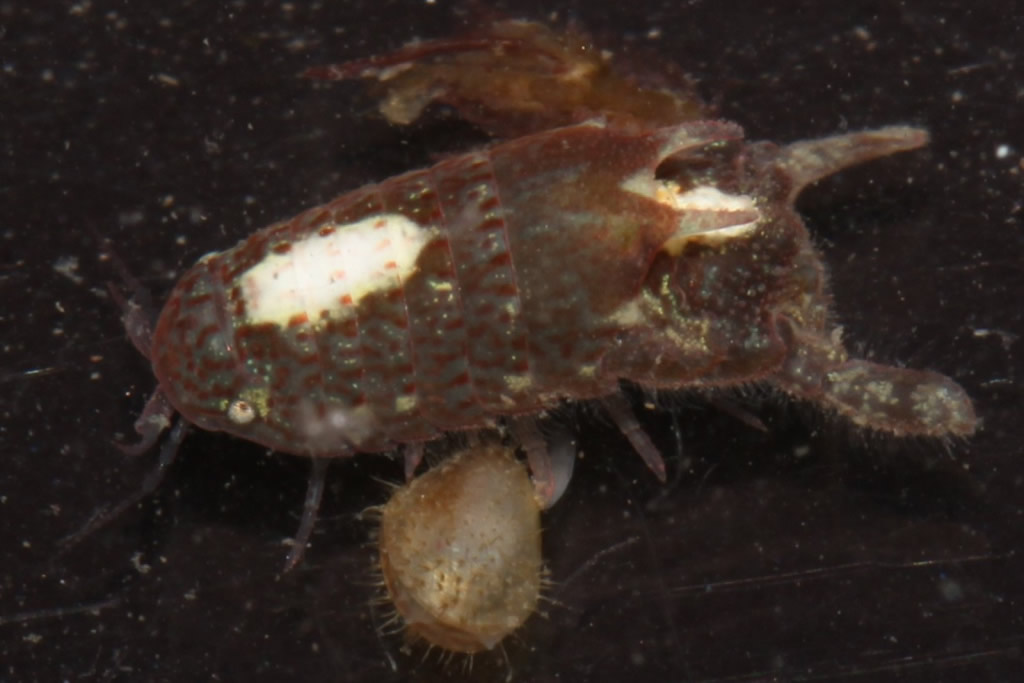Dynamene bidentata (Adams, 1800)
Status:
Native
ID Difficulty
Identification
Both males and females of this species have a single medial indent in the posterior border of the pleotelson. Males are also characterised by two backwards projections from pereonite 6. Unlike Dynamene magnitorata (essentially restricted to the Channel Islands), these taper to a point. Males are up to 7.0mm, females up to 6.0mm.
Distribution and Habitat
This species occurs on southern and western British as well as Irish shores. It appears to be absent from eastern Britain, the single record in south-east Scotland probably representing a stranding rather than a resident population (Vieira et al. 2016, who wrongly assign this record to north-east England). It is found in rock crevices, empty barnacles and amongst seaweed, mostly below MTL. Washing handfuls of Serrated Wrack (Fucus serratus) is a productive technique, whilst ovigerous females are most easily found in empty Volcano Barnacles (Perforatus perforatus).
For further information on the distribution of D. bidentata in Ireland, see here.
References
Naylor, E. & A. Brandt. 2015. Intertidal Marine Isopods. Synopses of the British Fauna (New Series), No. 3. Field Studies Council, for The Linnean Society of London.
Vieira, Pedro E., Henrique Queiroga, Filipe O. Costa, David M. Holdich. 2016. Distribution and species identification in the crustacean isopod genus Dynamene Leach, 1814 along the North East Atlantic-Black Sea axis. ZooKeys 635, 1–29.





